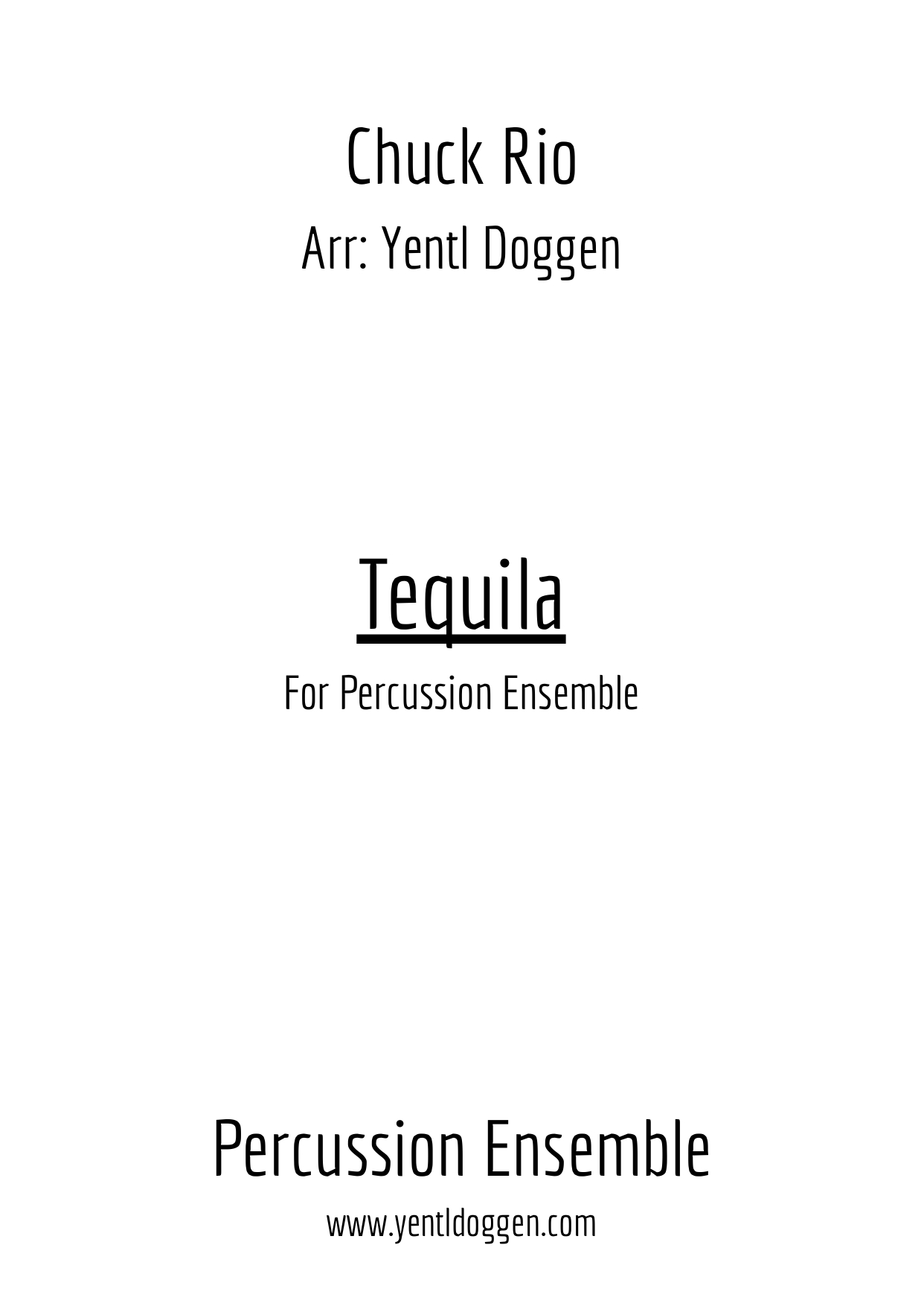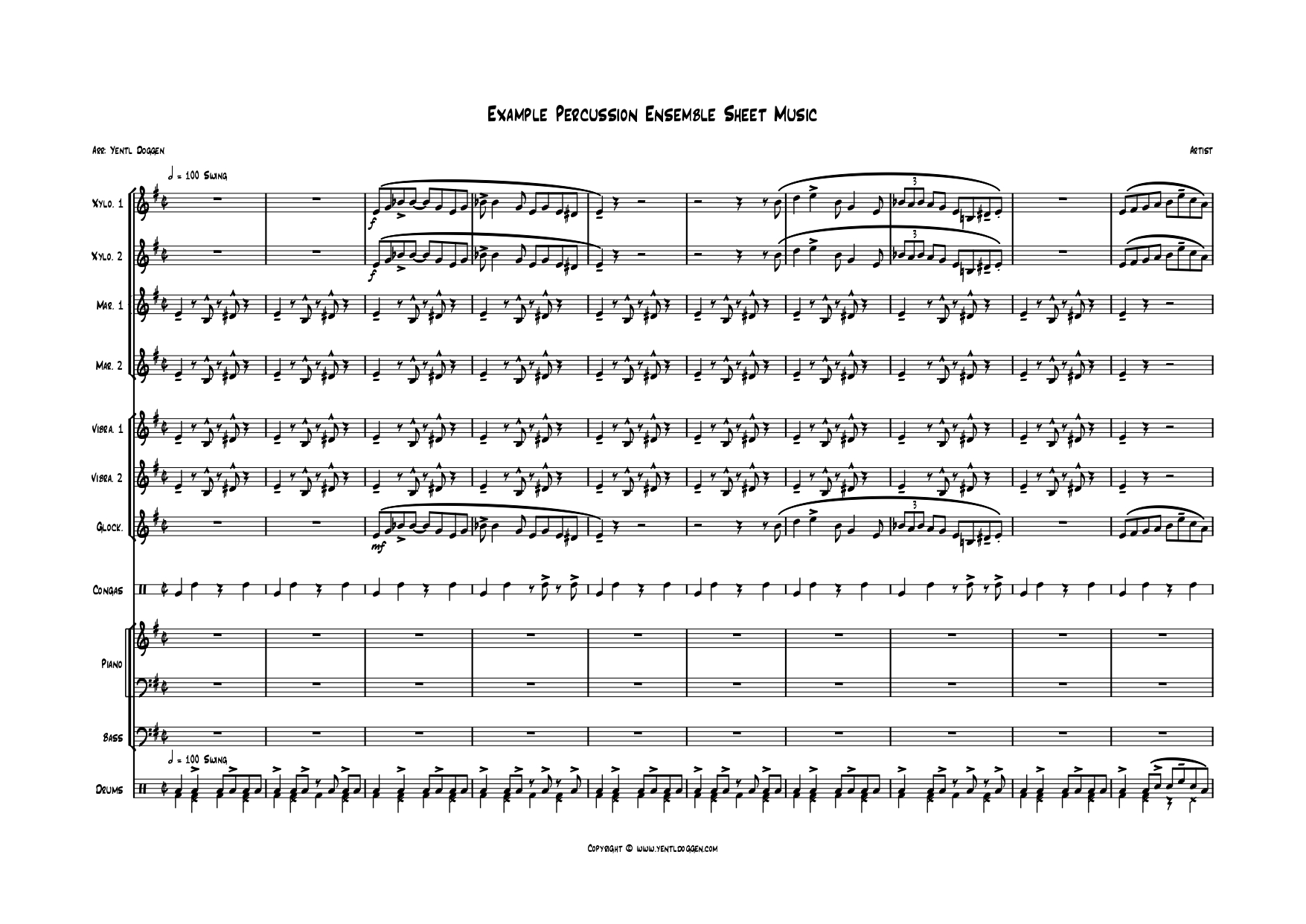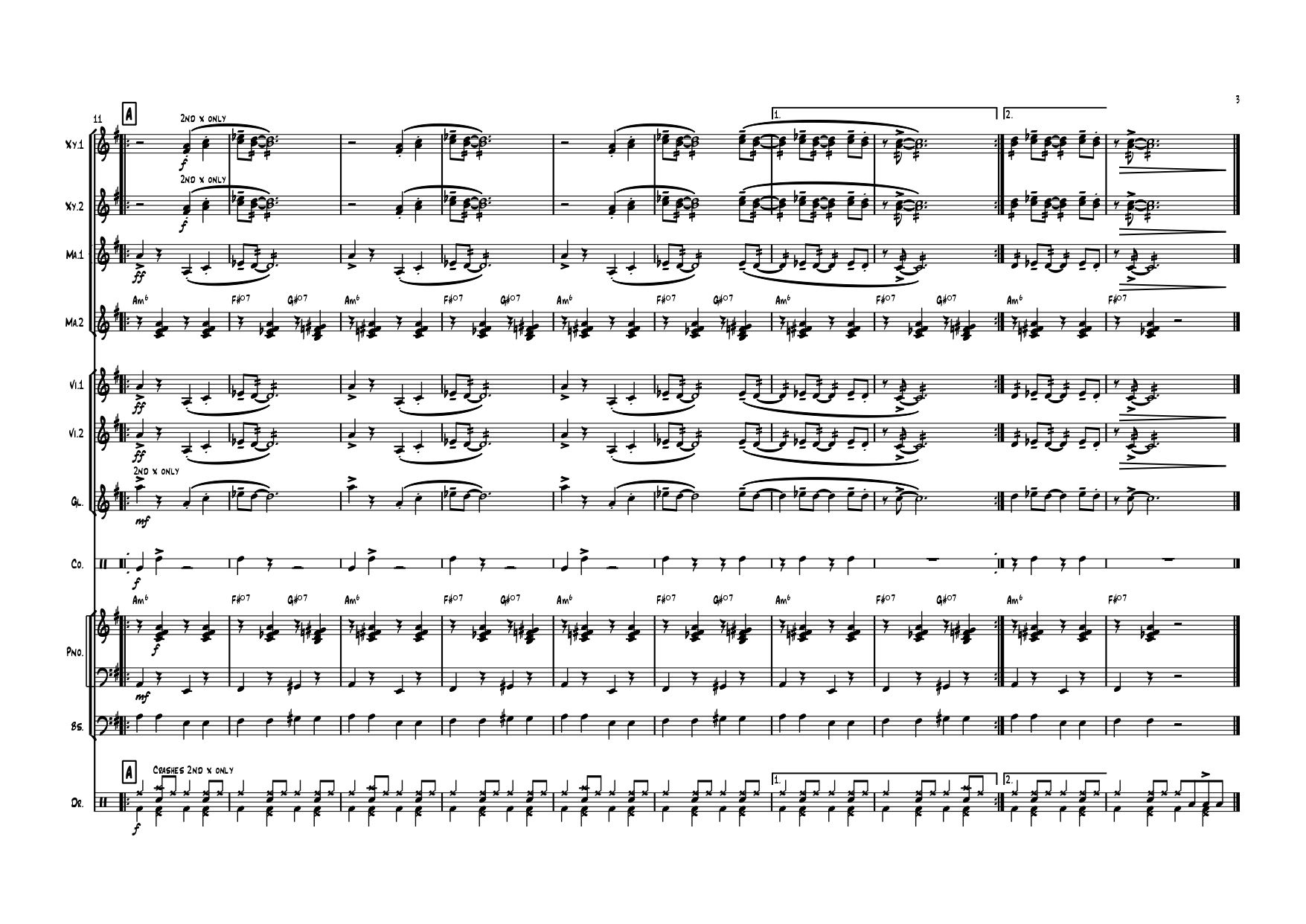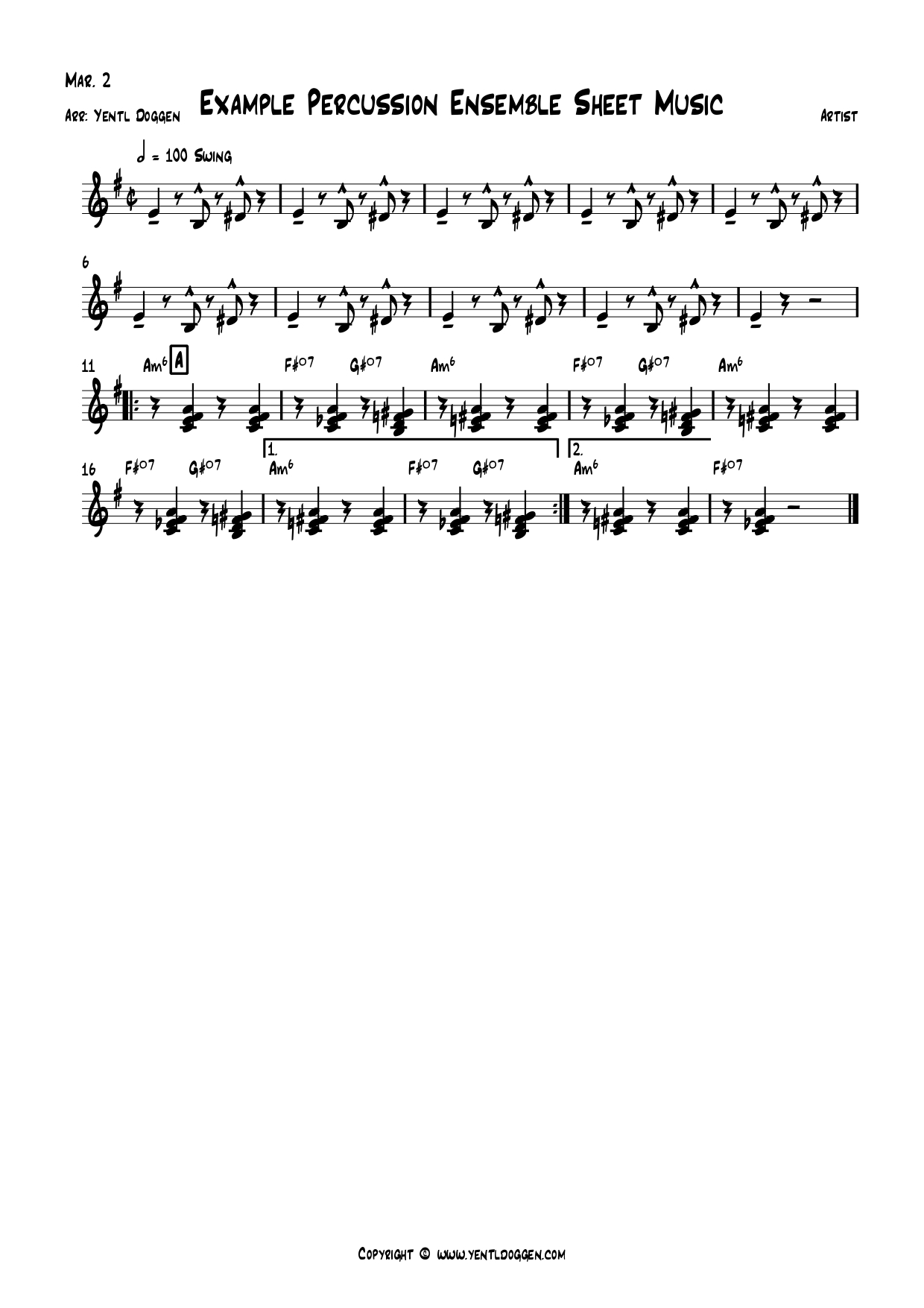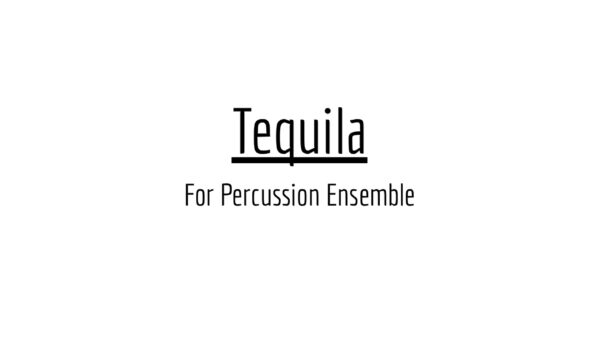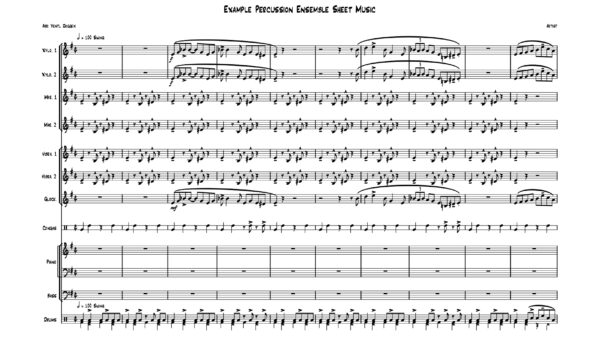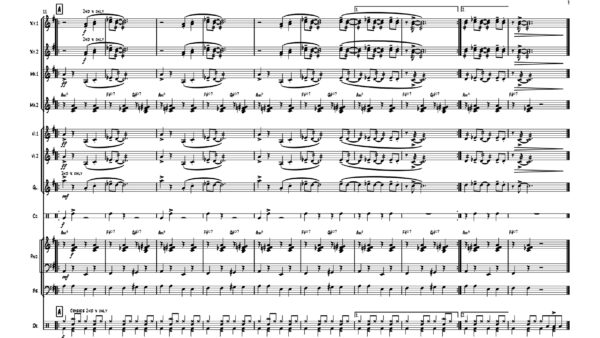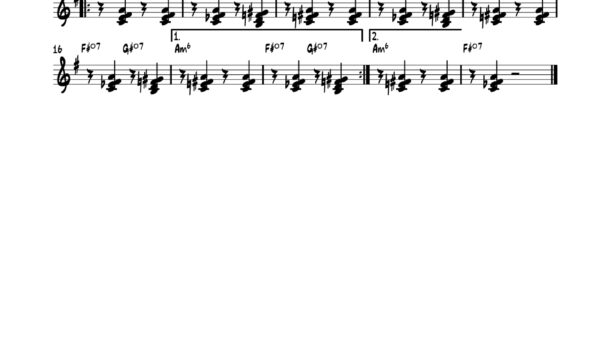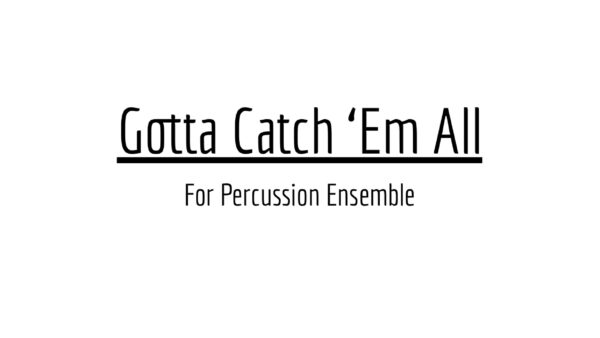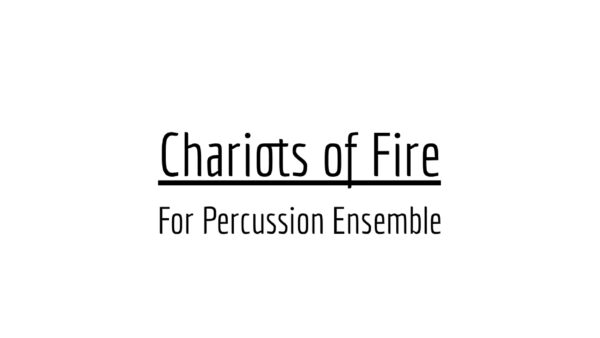Tequila (Chuck Rio) for Percussion Ensemble | Full Score PDF
Digital download (PDF) for the Tequila sheet music!
Tequila
Tequila for Percussion Ensemble is an arrangement of the well-known song, Tequila. The original music was written by Chuck Rio and later recorded by the Champs. Tequila, the instrumental Latin-influenced song released in 1958, became a number-one hit in the pop charts and is still famous in modern music culture. The Percussion Ensemble version is written as a tribute to ‘Ne Cola’. In my earlier years in the Drum- & Percussionband Paal, our conductor, Steven Ribus, wrote Ne Cola on the recognised melody of Tequila. As all performers were underaged, we said Ne Cola, which translates to A Coke, instead of Tequila.
My brother, Siebe Doggen, who at that time had just started studying music in high school, came up with the idea of adding Tequila to our playlist. Since I didn’t have an arrangement, we started writing the first percussion ensemble arrangement together. Later, after a few performances, I made final adjustments to the arrangement to make it more suitable for commercial purposes. The percussion ensemble version of Tequila is written for 13 players and can easily be extended to 18 players if needed. In the middle of the song, there is space for solo’s in the mallets on F minor’s (blues)scale. Ideally, all players can have their input in the solo part.
Tequila for Percussion Ensemble:
Mallets:
The mallets section consists of two xylophones, two marimbas, a glockenspiel and a vibraphone. Most of these parts are straightforward. The majority of the instruments get a mix of harmony and melody. In the solo section, it is possible to make the instruments communicate with each other rather than having a classic soloist player while the rest are silent. The themes should blend in with the overall harmony in the balance between the instruments.
Bass and Piano:
The bass part in Tequila for the percussion ensemble is relatively easy and can be played on the guitar or the bass register of the marimba. There is this joke: you can become a professional bass player if you know how to play three notes. The bass guitar part in Tequila comes pretty close to that number. On the other hand, the piano part is slightly more complex. Depending on the level of the pianist, this can be tricky to play. The challenging part isn’t the notes, but more the expression and Latin feel behind them.
Timpani:
The timpani part is very similar to the bass part, and the two players should work well together. Although the notes on the timpani are relatively straightforward, the player should have an eye for the details and the expression to make this part sound like it should.
Drum Set:
The drum set part in Tequila is probably the hardest of all. Not only is the groove hard to play, but making it sound good is even more complicated. If this part is too hard, the drummer can choose to simplify or even recreate a personal Latin groove. Ideally, the drumkit is a Latin or a Jazz drumkit to emphasise the Latin rock feel.
Percussion:
The percussion parts are very repetitive but not less important. On the contrary: what is Latin music without percussion? You can double the agogo bells part on the congas if a different instrument is needed. Unfortunately, there is a little mistake in the final print version. In the cha-cha bell part, some notes are written on the line instead of above and underneath. In this case, the groove follows the same pattern as before.
My website has multiple ways to keep in the loop with music and travel-related updates. Make sure to follow my Instagram and Facebook pages to get the latest content on your socials. To get the updates in your mailbox, subscribe to the newsletter. I will post plenty of free drum lessons and other music and drum-related advice on this website in the future! Check out the other music education posts if you haven’t already!


